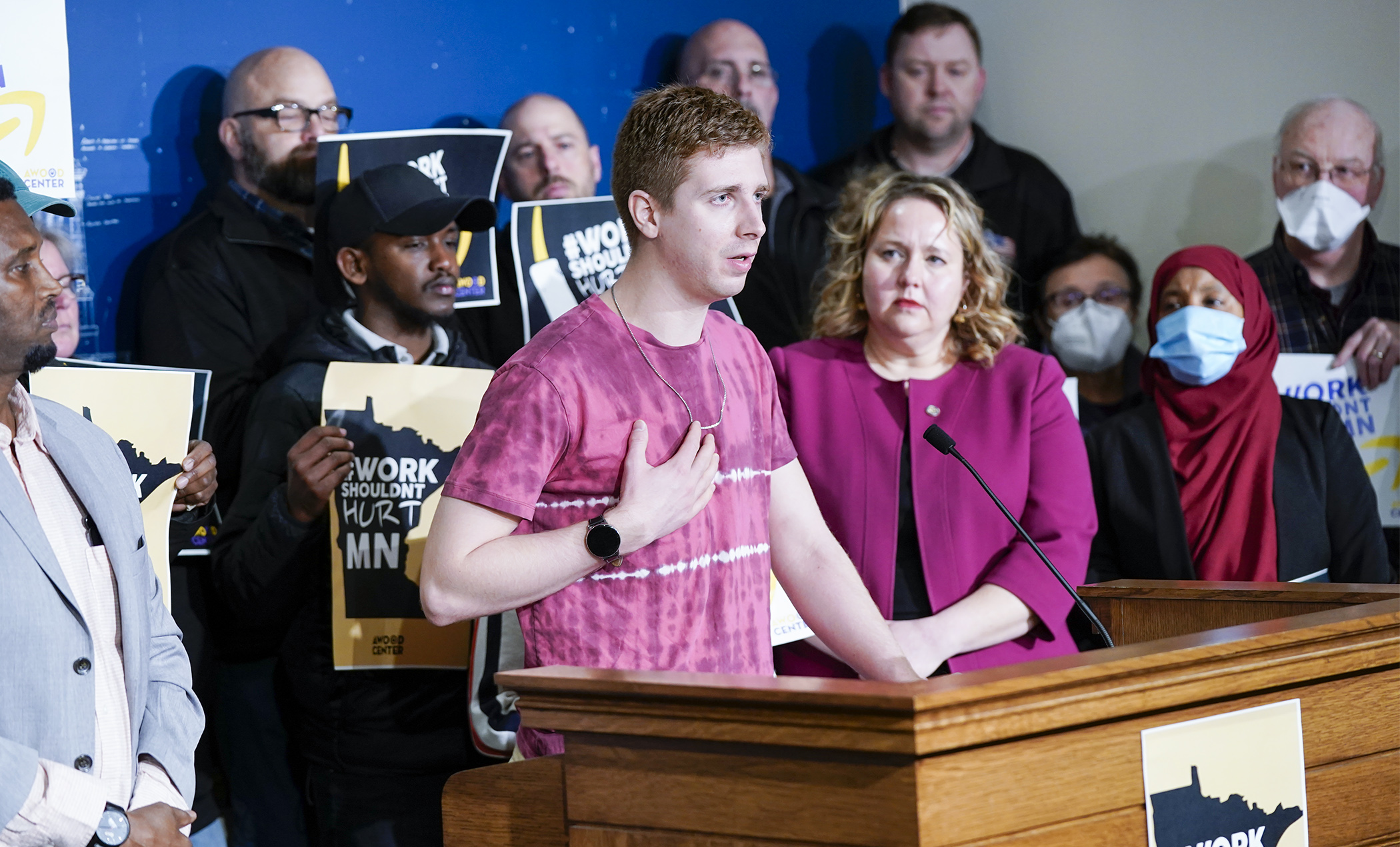House passes warehouse distribution center worker safety bill

Troubled by reports of injuries and lack of transparency for performance standards at Amazon warehouses, the House passed a bill on Monday to establish certain provisions for warehouse worker safety.
HF2774 would establish worker safety requirements for warehouse distribution centers. It would apply to employers with 250 or more employees at one warehouse distribution center or 1,000 or more employees at one or more warehouses distribution centers in the state.
Sponsored by Rep. Emma Greenman (DFL-Mpls), the bill was passed 72-60 and sent to the Senate where it is sponsored by Sen. Kari Dziedzic (DFL-Mpls).
“This bill rests on a simple premise that all Minnesotans deserve to be safe and secure at work,” Greenman said. “It protects warehouse workers by updating worker safety standards with common sense notice and transparency requirements, giving workers the information and power they need to keep themselves and their workers safe.”
Employers would be required to provide written notification of any work quota placed on employees at the time of hire or within 30 days of enactment and at least two days before the quota would take effect. The written notification would be required to be in the worker’s preferred language, must include how the quota would be measured, any consequence for not meeting the quota and would prohibit any adverse action if the quota wasn’t disclosed.
Employees would also have access to their work speed data.
Additionally, employers would not be able to create work quotas that interfere with compliance of required meal, rest, restroom break, prayer periods or any other consideration of Occupational Safety and Health Administration workplace safety standards.
The Department of Labor and Industry would be required to investigate violations if OSHA data shows a 30% higher than a year’s average incidence rate for nonfatal occupational injuries and illness. Monthly safety meetings would be required until incidence rates fall 30% below the average for two years.
Alleged actions by Amazon are the impetus for the bill.
Greenman said 1 in 9 workers in Amazon’s Minnesota warehouses suffer an injury each year, a rate four times private companies and twice that of other warehouses.
“Work shouldn’t hurt, but for Minnesotans at Amazon’s warehouse it does,” Greenman said.
Republicans argued the bill targets one company and wondered if the Department of Labor and Industry and OSHA are falling behind in their responsibilities of looking out for workers.
“Members, I have heard you all talk about just one company; Amazon, Amazon, Amazon,” said Rep. Jim Nash (R-Waconia). “It almost sounds like it’s my kids ordering Christmas presents during Christmas as we read whose packages are coming to the door. We have a department to handle these things. We have OSHA to handle these things.”
Greenman countered the bill would impact any warehouse that doesn’t meet the bill’s requirements.
“What this bill does is say that if you’re going to have a quota or performance standard, you have to tell your workers what it is before you can discipline them for it,” she said. “That’s all it does. It says if you track data, that performance data, you have to give workers access to that information. That’s all it does. It’s not difficult. Why we’re hearing about Amazon is many big warehouse companies already do it. So, complying with this law will not be hard for them.”
Related Articles
Search Session Daily
Advanced Search OptionsPriority Dailies
Speaker Emerita Melissa Hortman, husband killed in attack
By HPIS Staff House Speaker Emerita Melissa Hortman (DFL-Brooklyn Park) and her husband, Mark, were fatally shot in their home early Saturday morning.
Gov. Tim Walz announced the news dur...
House Speaker Emerita Melissa Hortman (DFL-Brooklyn Park) and her husband, Mark, were fatally shot in their home early Saturday morning.
Gov. Tim Walz announced the news dur...
Lawmakers deliver budget bills to governor's desk in one-day special session
By Mike Cook About that talk of needing all 21 hours left in a legislative day to complete a special session?
House members were more than up to the challenge Monday. Beginning at 10 a.m...
About that talk of needing all 21 hours left in a legislative day to complete a special session?
House members were more than up to the challenge Monday. Beginning at 10 a.m...